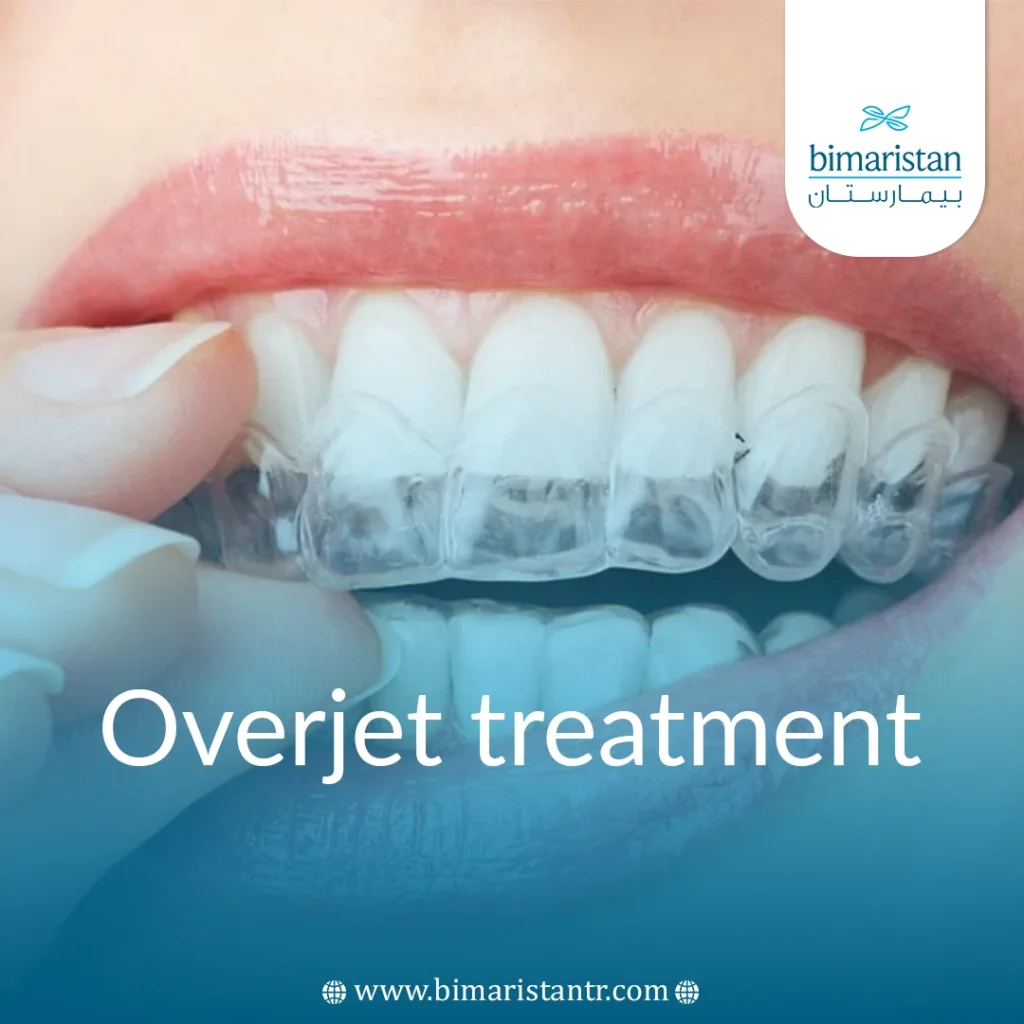Overjet treatment in Turkey is an essential step to address tooth protrusion and achieve the smile you’ve always wanted. A beautiful smile can greatly enhance your self-confidence. Discover how overjet treatment, including clear aligners and surgical options, can effectively correct protruding teeth and help you regain your smile.
In most cases, dental patients are more concerned about the condition of their teeth than their position. Common dental issues such as tooth decay and sensitivity are often people’s main concerns, but can poor positioning of the teeth and jaw cause issues? The answer is yes, and the most common type of malposition is the front incisor teeth.
What is overjet?
It is perfectly normal for the upper front teeth to protrude slightly in front of the lower teeth when the mouth is closed; the usual distance is 2 mm. However, if a person’s upper front teeth extend more than 2 mm forward, the patient has an overbite.
Upper front teeth protrusion is a dental condition in which the upper teeth protrude excessively above the lower ones. Some teeth are mildly protruding in some cases, while others can be severe.
Overjet treatment is important for improving the appearance and aesthetics of the mouth and teeth and addressing functional issues. Protruding teeth can lead to difficulties and discomfort when chewing, drinking, and biting. In more severe cases, overjet problems may even cause jaw pain, making overjet treatment essential for those experiencing these challenges.
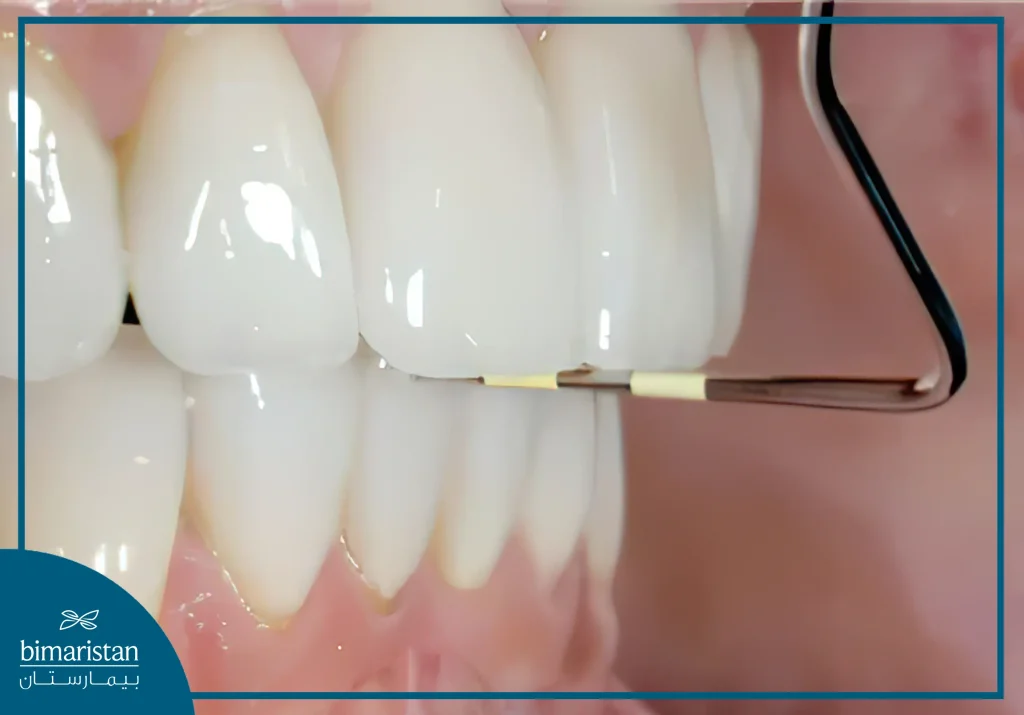
Unlike the previous issues, dental alignment issues can make it difficult for patients to close their lips, and in some rare cases, they can have trouble speaking or even constantly bite their tongue or cheek.
What do the degrees of protrusion of the teeth and jaws indicate?
Grade 1, which is the normal condition, occurs when the upper teeth protrude slightly more than the lower teeth within the limits of the normal occlusion; this type is the most common.
Grade 2, called a deep bite, may occur due to mandibular retraction, and Class II malocclusion is diagnosed when the patient has a severe overbite.
Grade 3 is when the patient has a forward protrusion of the lower jawbone, called underbite, which causes the lower teeth to protrude in front of the upper teeth.
Signs that I have an overjet
Signs and symptoms of overjet vary depending on the severity of the condition. If you or your child notice any of these signs, it’s important to consult your dentist for overjet treatment to correct tooth protrusion:
- Incorrect bite and pronunciation
- Difficulty chewing and biting
- Frequent biting of the tongue and cheeks
- Oral breathing
- Asymmetrical facial appearance
- Inability to close lips
It is generally recommended that children be screened for overjet and other occlusal issues before the age of seven. Early identification allows for timely overjet treatment, which is more effective in correcting protruding teeth and related problems at a younger age.
What are the causes of overjet?
There is usually not just one single cause of incisor protrusion but rather a combination of different factors that can contribute to this specific dental condition.
Heredity
In many cases, tooth protrusion is a hereditary issue; if one of the patient’s parents has it, they may have one, too. The condition can also occur if a person’s lower jawbone is receding and weak. This causes the upper front teeth to protrude more than they should, and it is one of the most common causes of protrusion.
Bad Mouth Habits
Tooth protrusion can also occur when practicing many bad habits, such as thumb-sucking in childhood. Allowing a child to keep a pacifier in the mouth for a long time can also contribute to the onset of this condition, so parents should be cautious.
It is crucial for patients to address dental protrusion promptly to achieve healthy, symmetrical teeth. The best approach for overjet treatment is to start early, particularly in children. Timely intervention is vital, as the most effective results are often seen in patients who begin treatment around the age of seven.
However, that doesn’t mean teens and adults can’t pursue overjet treatment for their protruding teeth; while it may require more effort, it is certainly possible.
How is the overjet treatment performed?
The fact that overjet treatment is possible is good news, especially for those whose confidence has been affected by the appearance of their teeth. The remaining thing is to choose the appropriate treatment method. Fortunately, there are different methods and devices for overjet treatment depending on the severity of the condition, which we will mention below.
Traditional orthodontics
Orthodontic treatment is a very common procedure. Orthodontic appliances fix all kinds of dental issues, including teeth protrusion. Braces are designed to straighten and correct the alignment and protrusion of the patient’s teeth by slowly moving them to a new position. This system requires routine adjustments by an orthodontist.
Traditional metal bows have evolved greatly over the past few decades. They are now smaller, less conspicuous, and available in different colors.
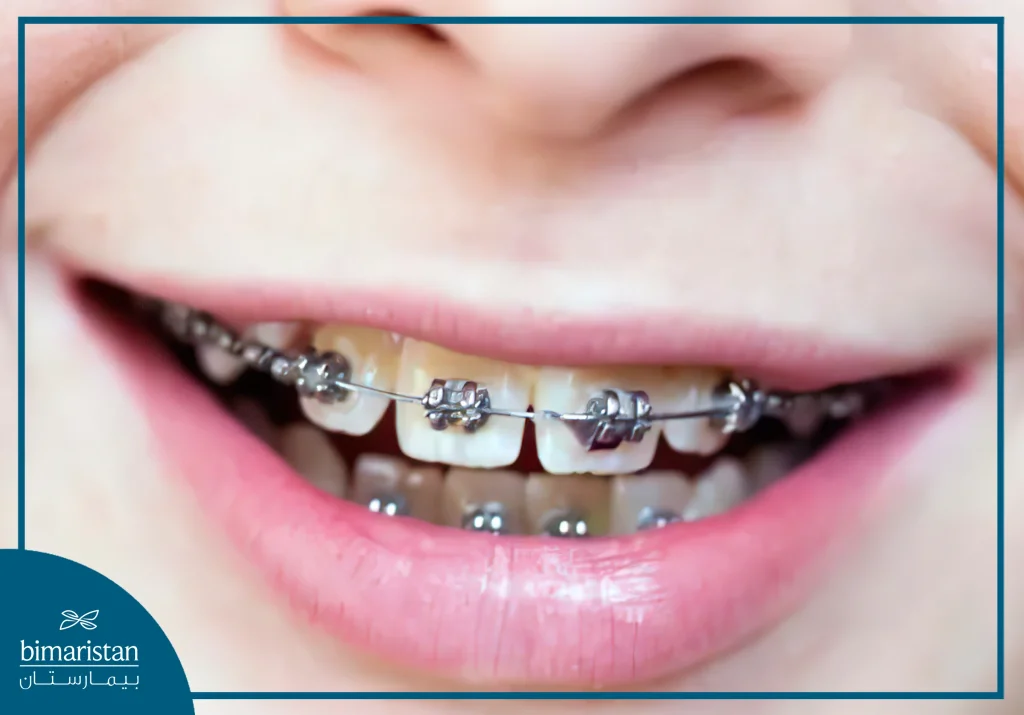
Resin Binders
Composite resin materials such as composite change the patient’s teeth’ shape and size, making the incisor teeth’ protrusion less noticeable.
The resin is as strong as a natural tooth and can last for a few years.
Clear aligners
This treatment is used by dentists to treat overbite and underbite issues in teens and adults. The dentist makes a series of removable clear plastic aligners from a mold of the patient’s teeth and places them over the teeth to slowly and painlessly reposition them.
Transparent braces blend very well with the natural color of the teeth but may not be suitable for severe cases of structural issues with the jawbone.
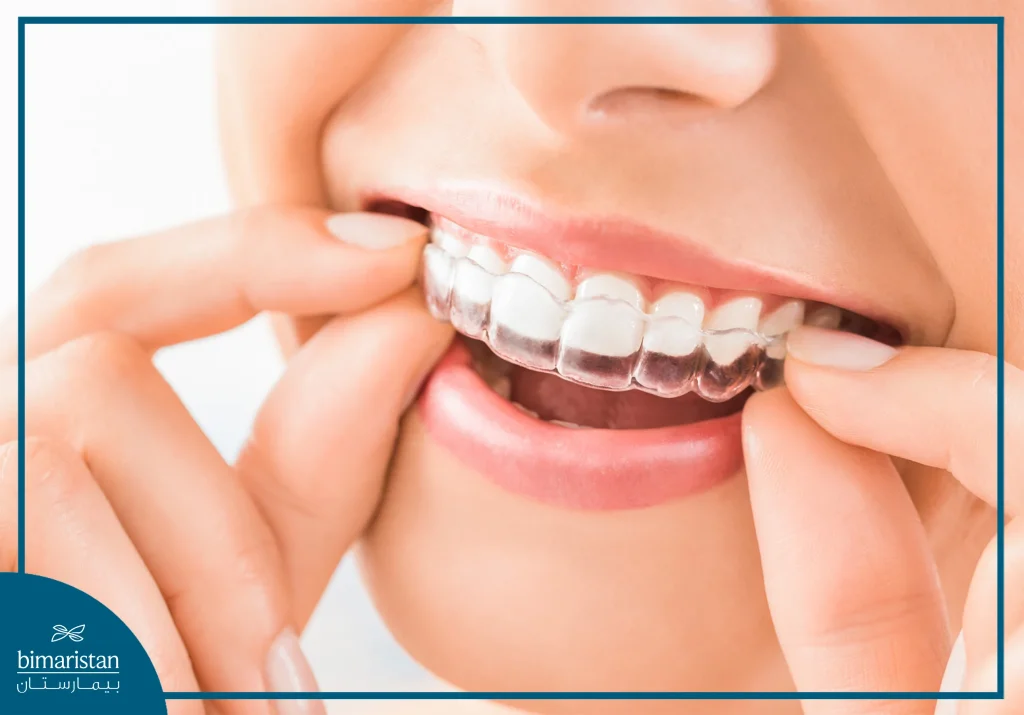
This device is similar to traditional braces but is also more accurate, costs a little more, and minimizes frequent clinic visits.
Orthotics with selective dislocation
Selective tooth extraction is often part of a plan to correct protrusion and other dental imperfections.
In the overjet treatment, the arch of the upper jaw can be shortened by extracting the premolars and then pulling the upper front teeth. This can be used when the patient has a small lower jaw or when the patient has a short arch in the lower jaw as a result of missing teeth in the lower jaw.
This can be a good option for many patients, especially those whose facial appearance would benefit from a molar extraction.
Orthodontics and replacement of missing teeth
The protrusion is either due to a jawbone issue, such as mandibular osteogenesis imperfecta, or the loss of some lower teeth, which makes the arch shorter.
Instead of removing the upper teeth and retracting the front upper jaw teeth, this technique uses orthodontics to open the spaces filled by the missing teeth, providing tooth spacing and lengthening the lower jaw arch to eliminate protruding teeth while leaving the upper jaw teeth in an optimal position.
It has become common today to replace missing teeth with dental implants. In just one day, Bimaristan Center in Turkey has the latest dental implant technology. Do not hesitate to contact us.
Veneer lenses
Some dentists tend to treat protruding incisor teeth with veneers, which are custom-made pieces of zirconia or composite that the dentist adheres to the front surface of the teeth. The veneer mimics the natural appearance of the patient’s teeth.
Dental veneers are a good cosmetic option for hiding minor dental imperfections, such as protruding teeth and other similar imperfections, and modifying their appearance. However, porcelain veneers can last about 10 to 15 years and are an expensive method.
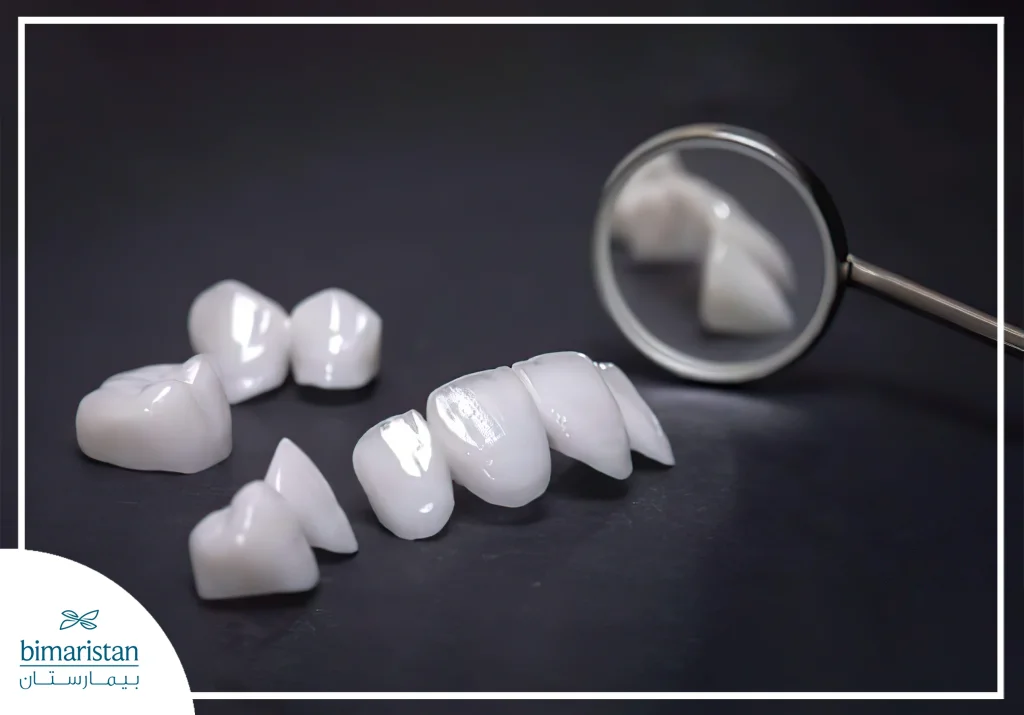
Dental crowns
Dental crowns are custom-made and used by dentists to cover the entire surface of a patient’s protruding teeth. This procedure requires that these teeth be filed down. Just like veneers, crowns can help beautify the teeth and make them look natural and straight.
Crowns can last about 5 to 15 years.
Stabilizers (movable braces)
The retainer is a piece of molded plastic placed on the roof of the patient’s mouth. A thin wire attached to it covers the front teeth and applies light pressure on them. It is used to correct minor cases only.
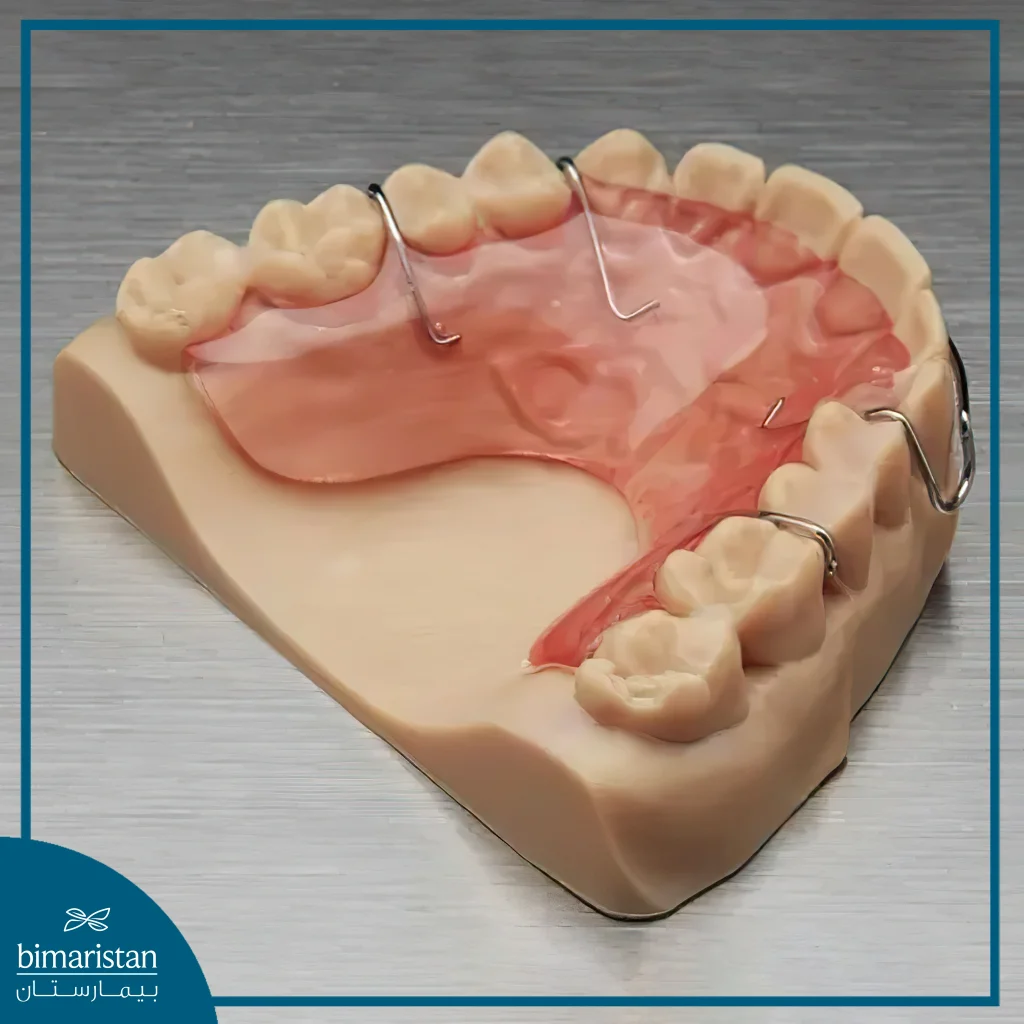
Specialists recommend that patients wear retainers for two to three months, often only at night. One benefit of a retainer is that it can be removed by the person when they want to eat or brush their teeth.
Maxillofacial Surgery
Usually, as a last resort in severe cases of people with bone issues who simply cannot straighten their teeth with braces or retainers, orthognathic surgery is preferred.
Fortunately, most people have minor issues with protruding teeth, and surgery is usually not required.
Sources:
